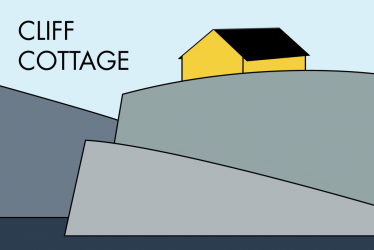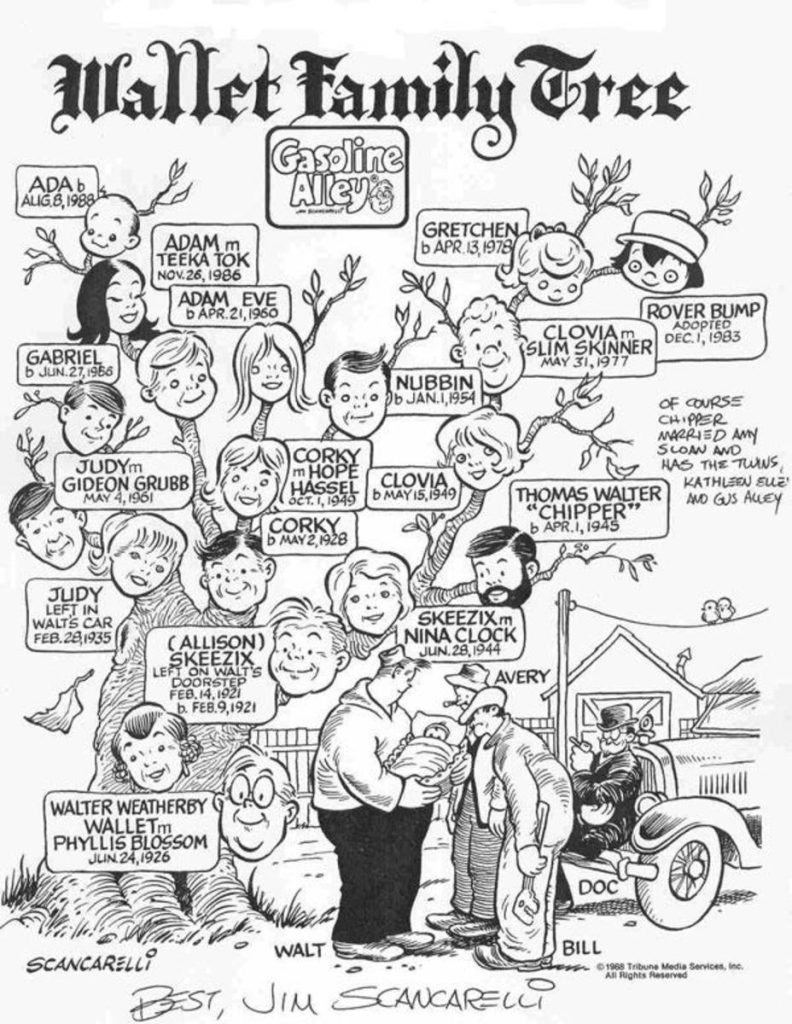
Explaining Comics = The 9th Art using Metalanguage
The comic stip is a cultural product and a means of expression. In the past century it has developed its conceptual and formal elements to the point of being considered art. One only has to take a look at Chris Ware’s (1967 – ) graphic novel Jimmy Corrigan, the smartest kid in the world (2000). It has exhibited in museums such as the Whitney Museum of America Art (2002) or the Museum of Contemporary Art, Chicago (2006). It demonstrates that not all comics are aimed at children. Interestingly, some people complain that comics are abandoning children, in favour of adult enthusiasts. This is regarded as a problem in Europe and North America, but not in Japan, since manga have genres for all ages and each of them evolves independently.
At this point, it is undeniable that the aesthetics of comics have influenced other cultural fields such as design, fashion or cinema. The work of the fashion designer Jean-Charles de Castelbajac (1949 – ), who was passionate about this genre, is an example of this. In the field of graphics, what are called stencils come from comics, according to some specialists in this medium. It goes without saying that a multitude of films today have comics as a reference, especially in the superhero genre. Superheroes who, as archetypes, play a role similar to that of mythological gods. They are popular myths.
We can therefore say that the aesthetics and content of comics has become a symbol of post-modern/ twenty-first century times. While there are more conservative positions determined to make distinctions between what they refer to as high culture and other cultural manifestations. In the case of comics, there are people of all ages and all perspectives who enjoy comics.
Some of the more interesting set of books in my library collection use 9th art metalanguage = comic strip books, to explain comics. Two were written by Will Eisner (1917 – 2005) who had popularized the term graphic novel. His first interesting, theoretical work was Comics and Sequential Art (1985/ revised 1990). It is based on a series of essays that appeared in The Spirit magazine, themselves based on Eisner’s experience teaching at the School of Visual Arts. The content is a series of demonstrations of principles and methods. The revised edition includes short sections on the print process and the use of computers. This was followed by Graphic Storytelling and Visual Narrative (1996).
Three other ones were written by Scott McCloud (1960 – ). These are: Understanding Comics: The Invisible Art (1993), that explores formal aspects of comics, the historical development of the medium, its fundamental vocabulary, and various ways in which these elements have been used. It also discusses more theoretical ideas about comics as an art form and medium of communication. Reinventing Comics: How Imagination and Technology Are Revolutionizing an Art Form (2000), which explains twelve revolutions that McCloud predicts are necessary for the comic book to survive as a medium: becoming literature, becoming art, enhancing creators’ rights, industry innovation, public perception, institutional scrutiny, gender balance, minority representation, diversity of genre, digital production, digital delivery and fully digital content. and Making Comics: Storytelling Secrets of Comics, Manga, and Graphic Novels (2006) details the processes behind storytelling, with an emphasis on character design with examples provided from the 9th arts history. Topics are reduced to a few principles. These include classifying cartoonists into four types, and identifying six basic emotions.
Tintin, an example of the 9th Art
With these five books in place, there is a need to examine a worthy example to follow, in a learning phase. The example shown below is Tintin by Herge = Georges Prosper Remi (1907 – 1983). In our household, considerable attention was paid to Tintin We have the complete works, admittedly in English, rather than French. Our family was not alone. Tintin comics have sold more than 240 million copies worldwide and has been translated to over 70 languages.
While Tintin has explored many countries in his comics, Herge hasn’t visited a single country in his lifetime. In Explorers on the Moon, Tintin explored the moon in 1954. This is 15 years before Neil Armstrong first landed on Moon.
Tintin’s dog Snowy has stolen many hearts and even made cameo appearances in ‘The Simpsons’ in the episode ‘Husbands and Knives’ and in ‘South Park’ in the episode ‘Imagination land Episode III’.
Tintin’s adventures were transformed into a movie titled ‘The Adventures of Tintin: Secret of the Unicorn’ in 2011, which was directed by Steven Spielberg, who bought the international movie rights to the character in the early 1980s.
The series ‘Tintin in Tibet’ was the most cerebral and emotional story of Herge, and the series was heavily influenced by his nervous breakdown.
Palle Huld (1912 – 2010) was a Danish film actor and writer. He won a journey around the world at the age of 15 in 1928 from a Danish newspaper. This reportedly inspired Hergé to create Tintin.
Milou = Snowy, Tintin’s pet dog, is modeled in part on a Fox Terrier at a café that Hergé used to frequent. It was also the nickname of Hergé’s first muse/ girlfriend, Marie-Louise Van Cutsem (1905 – 1974).
Haddock’s name was suggested by Germaine Kieckens (1906 – 1995; married 1932; divorced 1977) Hergé’s wife, who noted that haddock was a “sad English fish” over a fish dinner. Hergé then utilised the name for the English captain he’d just introduced. Haddock remained without a first name until the last completed story, Tintin and the Picaros (1976), when the name Archibald was used. There were several Haddocks who had served in the Royal Navy. Haddock uses strange/ difficult but innoffensive words that he hurls out as if they were very strong cusswords. This is due to the works initial publication in Catholic magazines.
Professeur Tryphon Tournesol = Professor Tryphon Sunflower (literal translation) = Professor Cuthbert Calculus was inspired by Auguste Piccard (1884 – 1962), a Swiss physicist, inventor and explorer known for his record-breaking hydrogen balloon flights, with which he studied the Earth’s upper atmosphere and became the first person to enter the Stratosphere. My own person interest in Piccard relates to his invention of the first bathyscaphe, FNRS-2. The French Navy took over this vessel, and relaunched it as FNRS III in the 1950s. Today, it is located at the Naval Museum in Toulon, France.

The Thompson twins were inspired by Herge’s father and uncle, who were twins.
Opera singer Bianca Castafiore was inspired by Herge’s paternal grandmother. Her favourite aria is from Faust (1859) composed by Charles Gounod (1818 – 1893).
Wikipedia provides information about other characters.
Works
One of the reasons Tintin appealed to our son, is that it gave him an opportunity to explore the world at an early age, from the safety of our house. Here are the details of the all of the works, in chronological order.
The following are the twenty-four canonical Tintin comic albums, with their English titles. Publication dates are for the original French-language versions. Note: In the original French versions, Tintin lives in Brussels. In the English translations, he lives in London. This created difficulties with the Black Island.
#01 Tintin au pays des Soviets = Tintin in the Land of the Soviets, set in Russia, serialized 1929-30, B&W album 1930, Colour album 2017. Hergé prevented this book from being republished until 1973.
After this, Hergé re-published in colour and in a fixed 62-page format.
#02 Tintin au Congo = Tintin in the Congo, set in Belgian Congo now the Democratic Republic of the Congo, serialized 1930-31, B&W album 1931, Colour album 1946.
#03 Tintin en Amérique = Tintin in America, set in Chicago, serialized 1931-32, B&W album 1932, Colour album 1945.
#04 Les Cigares du Pharaon = Cigars of the Pharaoh, set in Egypt, serialized 1932-34, B&W album 1934, Colour album 1955
#05 Le Lotus bleu = The Blue Lotus, set in China, serialized 1934-35, B&W album 1936, Colour album 1946
#06 L’Oreille cassée = The Broken Ear, set in fictional south American countries, serialized 1935-37, B&W album 1937, Colour album 1943
#07 L’Île noire = The Black Island, set in England, serialized 1937-38, B&W album 1938, Colour album 1943, 1966. Note: Before the reprint, multiple aircraft featured throughout the story were redrawn by Roger Leloup (1933 – ), who replaced the depiction of planes that were operational in the 1930s with those active in the 1960s, including: a Percival Prentice, a De Havilland Canada Chipmunk, a Cessna 150, a Tiger Moth, and a Hawker Siddeley Trident.
#08 Le Sceptre d’Ottokar = King Ottokar’s Sceptre, set in Syldavia, a fictional Eastern European country, serialized 1938-39, B&W album 1939, Colour album 1947
#09 Le Crabe aux pinces d’or = The Crab with the Golden Claws, set in the Sahara, serialized 1940-41, B&W album 1941, Colour album 1943
#10 L’Étoile mystérieuse =The Shooting Star, with plot similarities with La Chasse au météore = The Chase of the Golden Meteor (1908) written by Jules Verne (1928 – 1905), serialized 1941-42, Colour album 1942. Note: This was the first album to be originally published in colour. Often regarded as antisemitic.
#11 Le Secret de La Licorne = The Secret of the Unicorn, involves a riddle left by 17th century Francis Haddock, which leads them to the hidden treasure of the pirate Red Rackham. Serialized 1942-43, Colour album 1943. Books 11 to 15 formed a middle period for Hergé marked by war and changing collaborators.
#12 Le Trésor de Rackham le Rouge = Red Rackham’s Treasure, set in the West Indies, much of it aboard the Serius, a fishing trawler, serialized 1943, Colour album 1944
#13 Les 7 Boules de cristal = The Seven Crystal Balls, set in Peru, involving an archaeological expedition, serialized 1943-46, Colour album 1948. Note: often regarded as one of the best works in the series.
#14 Le Temple du Soleil = Prisoners of the Sun, serialized 1946-48, Colour album 1949
#15 Tintin au pays de l’or noir = Land of Black Gold, serialized 1939-40 (discontinued by Nazi occupational forces), 1948-50, Colour album 1951, 1971
#16 Objectif Lune = Destination Moon, serialized 1950-52, Colour album 1953
#17 On a marché sur la Lune = Walking on the Moon (literal) = Explorers on the Moon, serialized 1952-53, Colour album 1954
#18 L’Affaire Tournesol = The Calculus Affair, serialized 1954-56, Colour album 1956
#19 Coke en stock = The Red Sea Sharks, serialized 1956-58, Colour album 1958
#20 Tintin au Tibet = Tintin in Tibet, serialized 1958-59, Colour album 1960
#21 Les Bijoux de la Castafiore = The Castafiore Emerald, serialized 1961-62, Colour album 1963
#22 Vol 714 pour Sydney = Flight 714 to Sydney, serialized 1966-67, Colour album 1968
#23 Tintin et les Picaros = Tintin and the Picaros serialized 1975-76, Colour album 1976
#24 Tintin et l’Alph-Art = Tintin and the Alph-Art serialized 1986, Colour album 2004. Hergé’s unfinished book, published posthumously.
The following are double albums with a continuing story: Cigars of the Pharaoh (no. 4) & The Blue Lotus (no. 5); The Secret of the Unicorn (no. 11) & Red Rackham’s Treasure (no. 12); The Seven Crystal Balls (no. 13) & Prisoners of the Sun (no. 14); Destination Moon (no. 16) & Explorers on the Moon (no. 17).
Other characteristics
The English-language Adventures of Tintin books were originally published with handwritten lettering created by cartographer Neil Hyslop (1924 – 2015). Given versions of Hergé’s artwork with blank panels, he would write his English script on a clear cellophane-like material, to fit within the original speech bubble. In the early 2000s, Tintin’s English publishers Egmont discontinued this, because Casterman and Moulinsart decided to replace localised hand-lettering with a single computerised font.
In September 2017, French philosopher Vincent Cespede (1973 – ) suggested that Tintin was a girl. However, he accepted that it was his perspective and was fake news. However, this post will end by naming everyone’s favourite Swedish environmental activist, paying close attention to the second of her many names: Greta Tintin Eleonora Ernman Thunberg (2003 – ). So perhaps Cespede was closer to the truth than he imagined.




